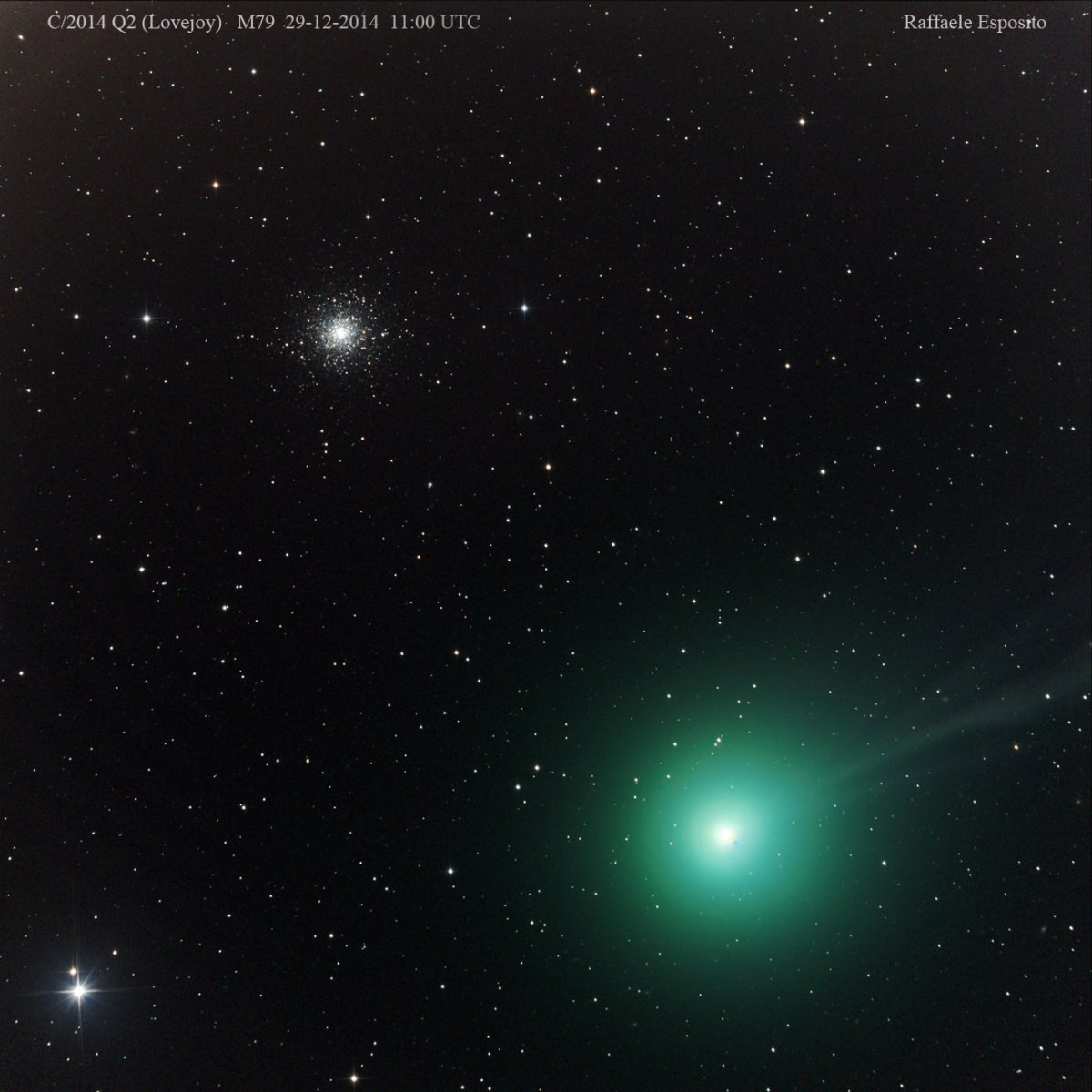TORONTO – It’s winter and it’s getting colder, but there are still good reasons to bundle up and enjoy the night sky. One reason is to catch a comet that is finally visible in Canada.

This isn’t being touted as a “comet of the century” like 2013’s Comet ISON, which fizzled. But it can already be seen with binoculars.
READ MORE: Space exploration: Why do we invest in missions to asteroids and comets?
Comet Lovejoy (officially named C/2014 Q2) was discovered by amateur astronomer Terry Lovejoy on August 17, 2014 from Australia using just an eight-inch telescope (in comparison, Canada’s largest telescope, located at the David Dunlap Observatory in Richmond Hill, Ontario, is 74 inches). It’s a great illustration of how small telescopes can aid in the discovery of celestial objects.
One amateur astronomer produced a stunning timelapse of Lovejoy on Dec. 28, seen below using an even smaller telescope.
The good news is that you don’t need to be an amateur astronomer to see it for yourself. And you don’t even need a telescope.
Comet Lovejoy is easy enough to find if you know where to look. Grab a pair of binoculars (before dressing for the upcoming chilly weather, of course) and head outside.
Since both Earth and the comet travel in their orbit around the sun, the comet moves across the sky. That’s why we’re enjoying it now: it was only visible in the southern hemisphere until last week.
At the end of December, the comet is low in the south, close to Orion, one of the most familiar and easiest constellations to find.
Now, you won’t see what you see in the photos: the comet will appear as a faint fuzz, unless it brightens further.
Just look for the three belt stars of Orion in the southern sky. At the end of December, the comet can be found below Orion’s right “foot,” the brightest star at the south end of Orion. In January, it rises higher: by January 10, Orion’s shield points the way.
If you’re in very dark skies, you might even be able to see it with the naked eye, as the comet has brightened over the past few days. However, as the full moon approaches on January 4, it will make seeing it harder.
It’s unknown how much brighter Comet Lovejoy may get. But it should remain visible with binoculars until about April.
And this is your only chance to catch the comet: it isn’t expected to return to the inner solar system for another 8,000 years.



Comments